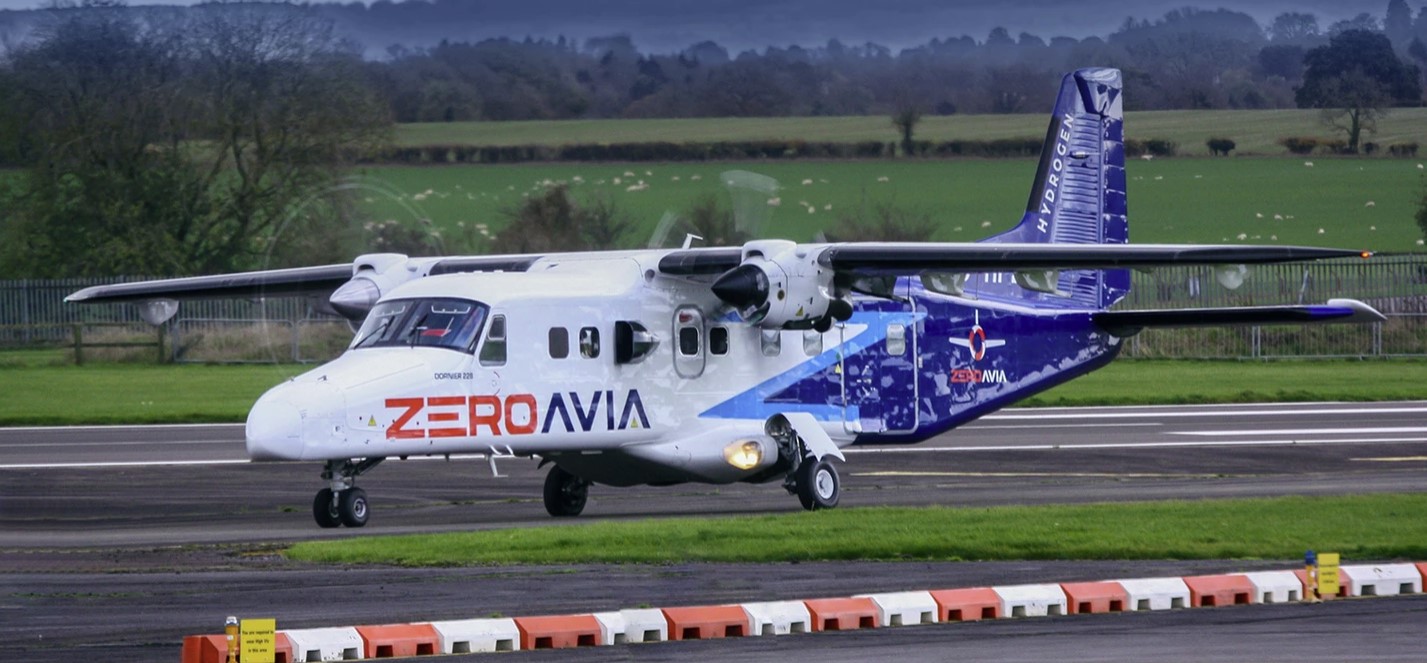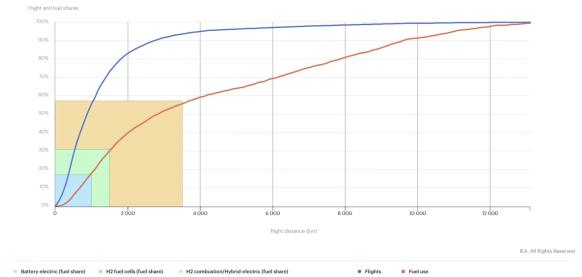Aviation weighs hydrogen's pros and cons
Aviation companies are examining the strengths and weaknesses of hydrogen for electric propulsion and direct combustion, both of which have the potential to transform global aviation.

Related Articles
To decarbonize global aviation, hydrogen may help replace kerosene, but the technology is still very much in development and varies depending on the size of the aircraft and the distance it must travel.
Hydrogen can provide the power needed to lift an aircraft by reacting with oxygen to produce electric energy in a fuel cell which runs a power train, or it can be burned in a gas-turbine engine as a direct kerosene replacement.
The technology is not new.
Hydrogen combustion was first tried in aircraft in the Soviet-built Tupolev Tu-155, which began operation in 1988 fueled by liquid hydrogen - though was later converted to liquified natural gas - and flew around 100 flights before being placed into storage after the end of the Soviet Union.
Share of flights and fuel use in commercial passenger aviation, and alternative fuel technology options by range
(Click to enlarge)
Source: International Energy Agency (IEA), Aviation, https://www.iea.org/reports/aviation
Electric Avenue
Decades later, developers such as the British/American aircraft company ZeroAvia are looking once again at which technology will provide the path to low-emission flight.
The company does not see Synthetic Aviation Fuel (SAF) as a long-term sustainable solution since, while it can reduce carbon emissions by as much as 80% over the lifecycle of the fuel, according to the oil company BP, it still produces climate warming emissions when you burn it including nitrous oxides (NOX), particulates, and large amounts of water vapor.
Combustion of hydrogen through a gas turbine produces similar tail-pipe emissions and such emissions have been found to contribute at least as much as CO2 to aviation’s total climate impact, according to a study by the European Union Aviation Safety Agency (EASA).
“That’s how we arrived at hydrogen electric as the most scalable and sustainable solution. We don’t combust the hydrogen, we combine it with oxygen to release electricity, then we can drive an electric motor. The water produced from that process is not what propels you forward, it’s low grade, low temperature water vapor and we can choose how it exits the aircraft, so that is not a problem,” says James McMicking Vice President of Strategy ZeroAvia.
“Because it’s low temperature and low pressure, you don’t have all the stresses on the engine that you have from a turbine, which drives the higher maintenance costs of those engines, so it increases the lifetime of the product and is fundamentally more efficient.”
The fuel cell route is already well developed and can power aircraft of 10-20 passengers over short ranges.
However, fuel cells' power density – or the amount of power per unit weight – means the larger the plane, the larger the weight of the fuel cell, a potentially insurmountable problem for a large airliner.
Fuel cells also operate at a low temperature which, McMicking explains, presents a thermal management problem.
ZeroAvia is working on fuel cells that operate at a higher temperature, of around 180-200 C, which allows them to run an air-cooling system, reducing weight and increasing the robustness of the system.
Meanwhile, research on the viability of stacking fuel cells to reduce weight and increasing the efficiency of the motor could lead to power density of over 12 kW per kilogram, McMicking says.
“This is the roadmap that’s going to take us into bigger aircraft that move around 60-70 people over 500 nautical miles range by 2027 and we will continue to scale that technology,” he says.
Hydrogen propulsion
Hydrogen combustion is the Aerospace Technology Institute (ATI) FlyZero’s preferred method for longer flights, with estimates suggesting that a tank of liquid hydrogen could carry a midsize aircraft from London to Hong Kong.
Until fuel cell technology improves the power density and temperature problems, the hydrogen-combustion propulsion system, at least for long-range, larger planes, is the most compelling, with aircraft engine giants such as Airbus expecting to achieve mature technology readiness by 2025.
Airbus’ ZEROe project has converted its A380 MSN1, the plane used for the development and certification tests of the A380, the world’s largest commercial passenger airline, to act as a testbed for hydrogen combustion technology.
“Our plan is to take this aircraft and modify it into a hydrogen propulsion flight laboratory,” Airbus Vice President Zero Emission Aircraft Glen Llewellyn said in a promotional video.
Storage and delivery
Another of the challenges for hydrogen propulsion is how and where to store the large quantities of hydrogen needed to fly the plane.
While hydrogen provides more energy by mass than kerosene, it creates less energy by volume, and at normal atmospheric pressures and room temperature, some 3,000 liters of hydrogen in its gaseous form are needed to match the energy produced from one liter of kerosene.
The answer is to convert hydrogen to its liquid form. Though that requires chilling the gas to -253C, it means four liters of liquid hydrogen would match one liter of kerosene, notes Airbus.
Keeping hydrogen at such a temperature requires very specific storage tanks with an inner and outer layer, a vacuum in between, and multi-layer insulation, the company says.
Such cryogenic liquid hydrogen tanks are used in space exploration vehicles, but the technology cannot be immediately transferable as safety requirements vary, with tanks used in commercial aircraft needing to be strong enough to survive some 20,000 take offs and landings.
The final piece of the puzzle is ensuring the hydrogen is available at the airport.
Edmonton International Airport, in Alberta, Canada, is working with private companies to develop and operate a retail hydrogen fueling station at the airport itself as part of the Edmonton Region Hydrogen Hub.
Such as system could be set up at the airport, including an electrolyzer and renewable energy source for those airports surrounded by sufficient spare land.
“The airport needs to decarbonize more broadly and by putting the electrolyzer on site, it can increase the amount of renewable power and use that power for different requirements such as potentially running ground equipment,” says ZeroAvia’s McMicking.
“You can open up quite a few networks relatively easily on the infrastructure side of things and at relatively small scale. Once you’ve done that, and you’ve demonstrated to the industry that this is real, that hydrogen can really be used to operate aircraft, then market confidence will build, and it will catalyze discussion and the investment needed to scale.”
By Paul Day

